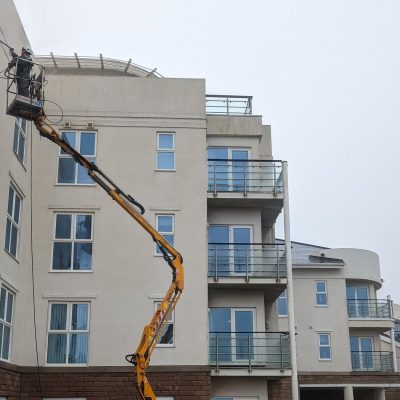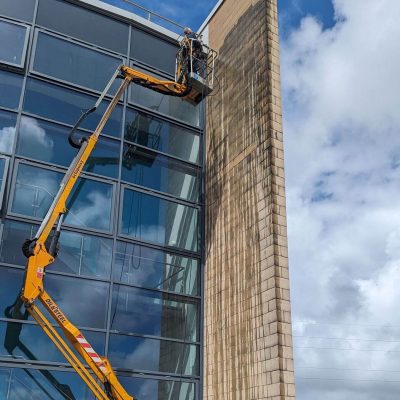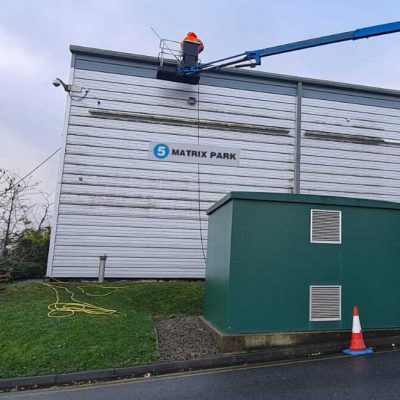Construction industry is one of the most hazardous sectors to work in. With a high risk of accidents and injuries, construction workers face a wide range of potential hazards on job sites.
It is critical for construction companies and workers to be aware of the common hazards present in the industry. And to implement effective control measures to mitigate these risks. This article will provide an overview of the key construction hazards, and outline the steps that can be taken to create a safer work environment for all on-site personnel.
Falls from Heights
Picture yourself standing on a beam hundreds of feet above the ground, with the wind gently swaying the structure. It’s a scenario many construction workers face daily. Falls from heights remain one of the most significant risks in the UK construction industry.
– Why It’s a Concern:
Falls can lead to severe injuries or even fatalities. In 2022/23, 40 people died from falls from heights, making it the highest cause of death.
Moving Objects & Vehicles
Construction sites are a hive of activity. With vehicles, machinery, and materials constantly on the move.
– Why It’s a Concern:
Collisions with moving objects or vehicles can cause severe injuries. According to the Health and Safety Executive, 29 workers died due to being struck by moving object and 20 workers died due to being struck by moving vehicles.
Hand-Arm Vibration Syndrome (HAVS)
Hand-Arm Vibration Syndrome (HAVS) is another significant hazard that construction workers in the UK need to be aware of.
HAVS is a condition caused by prolonged and repeated use of vibrating hand-held tools.
– Why It’s a Concern:
The vibrations can damage blood vessels, nerves, and joints in the hand and arm, leading to symptoms such as numbness, tingling, and pain.
Noise and Dust Exposure
Construction sites are often noisy environments. With the constant operation of machinery, tools, and equipment.
Similarly, construction sites generate a significant amount of dust, which can contain hazardous substances such as silica.
Breathing in these dust particles can cause respiratory issues, including lung diseases like silicosis.
– Why It’s a Concern:
Prolonged exposure to high levels of noise can lead to hearing loss/impairment and other auditory problems.
Electrical Hazards
With wires crisscrossing and machinery running, electrical hazards are ever-present.
– Why It’s a Concern:
Electrical accidents can result in severe burns, shocks, or even electrocution.
Manual Handling
Lifting, pushing, and pulling heavy loads are part and parcel of construction work.
– Why It’s a Concern:
Incorrect manual handling can lead to back injuries, strains, and sprains.
Fire and Explosion Hazards
Fire and explosion hazards are a significant concern in the construction industry. The presence of flammable materials, such as fuels, solvents, and gases, combined with ignition sources, can lead to catastrophic accidents.
– Why It’s a Concern:
Fires and explosions can cause severe injuries, fatalities, and extensive property damage.
That’s quite hazards. So –
What Control Measures Should Be Implemented to Safeguard Construction Sites?
Personal Protective Equipment (PPE)
PPE is the most visible form of control measure on construction sites. It acts as a barrier between the worker and potential hazards.
– What Does PPE Includes:
Hard hats, safety boots, high-visibility vests, gloves, safety goggles, and earplugs or earmuffs.
– Why PPE Crucial:
PPE can prevent or reduce the severity of injuries, from head trauma to hearing loss.
Regular Safety Training and Drills
Knowledge is power, especially when it comes to safety.
– What Does Safety Training and Drill Involves:
Training sessions on machinery operation, emergency procedures, and safety protocols.
– Why It’s Important:
Well-trained workers are more likely to recognise and avoid hazards, and they know how to respond in emergencies.
Safety Signage and Barriers
Clear communication is vital in a bustling construction site.
– What It Includes:
Warning signs, danger tape, and physical barriers.
– Why It Matters:
Proper signage warns workers and visitors of potential hazards, while barriers physically prevent access to dangerous areas.
Regular Equipment Maintenance and Inspection
Machinery, when not maintained, can become a ticking time bomb.
– What It Involves:
Regular checks, servicing, and repairs of machinery and equipment.
– Why It’s Necessary:
Well-maintained equipment is less likely to malfunction, reducing the risk of accidents.
Ergonomic Solutions
Construction doesn’t have to be a pain—literally.
– What It Includes:
Adjustable workstations, ergonomic tools, and work practices.
– Why It’s Beneficial:
Ergonomic solutions reduce strain and fatigue, preventing long-term injuries and improving worker productivity.
Fire Safety Measures
Fire can be a construction site’s worst nightmare.
– What Does Fire Safety Measure Includes:
Fire extinguishers, smoke detectors, and emergency evacuation plans.
– Why Fire Safety is Crucial:
Swift response to fires can prevent loss of life and property.
Risk Assessments
Knowing what you’re up against is half the battle won.
– What Does Risk Assessment Involves:
Identifying potential hazards, assessing the risks, and implementing controls.
– Why Risk Assessment Important:
Regular risk assessments help in proactively addressing potential dangers before they become actual hazards.
Final Words
In the UK’s construction landscape, where ambition meets innovation, control measures aren’t just good practices—they’re essential. They’re the foundation upon which our architectural dreams are built, ensuring that every structure stands not just tall and proud, but also safe and secure.
Remember, safety isn’t just a protocol; it’s a culture. And in the world of construction, a culture of safety can mean the difference between a successful project and a tragic incident.
So, the next time you marvel at a new building or bridge, take a moment to appreciate the hard work and dedication that went into making it a reality, and the safety measures that made it possible.
Note: This article aims to provide a general overview of construction hazards in the UK. Always consult with safety professionals and adhere to local regulations for specific guidance.



